We ask you, urgently: don't scroll past this
Dear readers, Catholic Online was de-platformed by Shopify for our pro-life beliefs. They shut down our Catholic Online, Catholic Online School, Prayer Candles, and Catholic Online Learning Resources essential faith tools serving over 1.4 million students and millions of families worldwide. Our founders, now in their 70's, just gave their entire life savings to protect this mission. But fewer than 2% of readers donate. If everyone gave just $5, the cost of a coffee, we could rebuild stronger and keep Catholic education free for all. Stand with us in faith. Thank you.Help Now >
The Catholic History of Memes
FREE Catholic Classes
Memes are a popular form of communication. A picture suggests a feeling, and a caption makes the point. Many people assume these are a new cultural phenomenon, but that isn't true. The Catholic Church has used memes for centuries to proclaim the Gospel and teach important lessons.
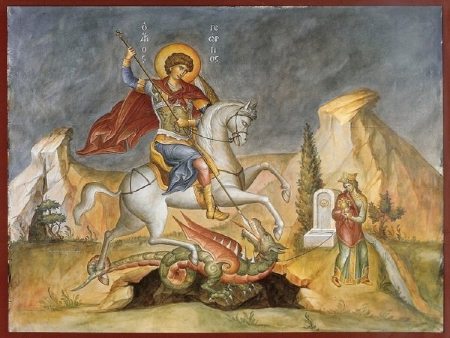
St. George slaying the dragon.
Highlights
6/16/2022 (3 years ago)
Published in Living Faith
Keywords: memes, Catholic, icons, iconography, history
LOS ANGELES, CA (California Network) - Here's a popular meme, "Captain Picard." The hero of the Star Trek, the Next Generation series, is often used to point out inconsistences between a person's stated beliefs and their behavior. You know, hypocrisy. Here is one such meme, with a Catholic caption. The meme suggests incredulity from an authoritative source (Picard is a Captain after all).

Captain Picard pointing out hypocrisy is a common meme.
Together with the caption, the meme evokes feeling while conveying meaning.
But this isn't a new phenomenon.
According to the Internet, the first meme online was a dancing baby icon, created in 1996. Others say the first viral meme was created in 1921, and shows a comparison between how a person thinks they look, and how they actually appear. Apparently, the ad went viral. However, memes go much further back, possibly even to prehistoric times when cave art and carvings were used to convey important ideas and meanings.
The term meme, is defined as: 1) An element of a culture or system of behavior that may be considered to be passed from one individual to another by nongenetic means, especially imitation.2) A humorous image, video, piece of text, etc., that is copied (often with slight variations) and spread rapidly by internet users. (Oxford Languages Dictionary)
But a short examination of Catholic icons find these works of art meet this criteria.
Here is some Catholic humor from a medieval manuscript, drawn by a monk.
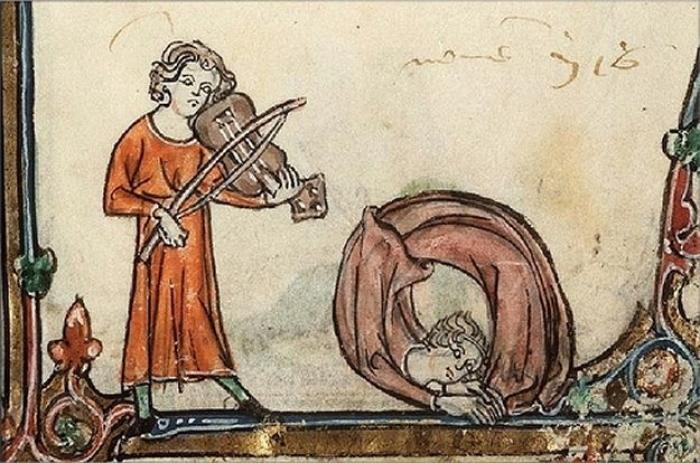
Medieval monks often used humor, drawing pictures in the margins on their work. We may not get the jokes, but someone thought it was funny enough to draw.
The joke itself eludes us, but we can imagine. Either the music is so amazing as to provoke medieval break dancing, or it is so terrible that one wants to curl up and roll away.
In fact, some medieval artwork is so iconic, that it's been repurposed to create modern memes.
Here is a meme based on works found on the Bayeux Tapestry.
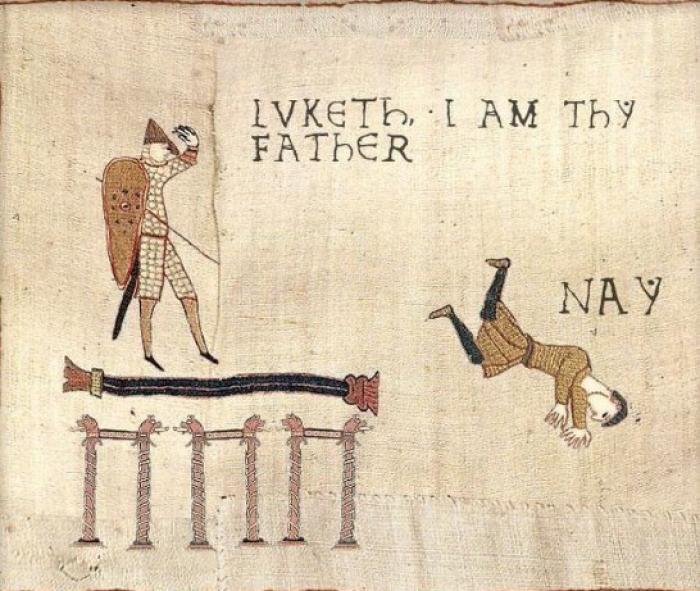
Modern internet users have managed to turn the Bayeux Tapestry into an unending source of memes. Here is an iconic scene from the movie, 'Star Wars,' turned into a medieval-looking meme.
The early Church used memes of various kinds to convey meaning to people, who often lacked the ability to read. Images were painted on the walls, ceilings, and on canvas and other mediums, to convey stories.
Here is St. George, slaying the dragon. According to the legend, a dragon terrorized a town, demanding the tribute of a sheep each day. When the villagers ran out of sheep, the dragon demanded children. The victims were chosen by lottery, until the king's daughter was drawn. Then, it happened that St. George arrived and learning of the dragon, he slew the beast, saving the princess. Sound familiar? That's a Catholic story. It reveals how evil can be incremental, something that begins small, but develops into something much worse. Much like the relationship between venial sin and mortal sin.
The icon of St. George conveys this truth to people who know the story.
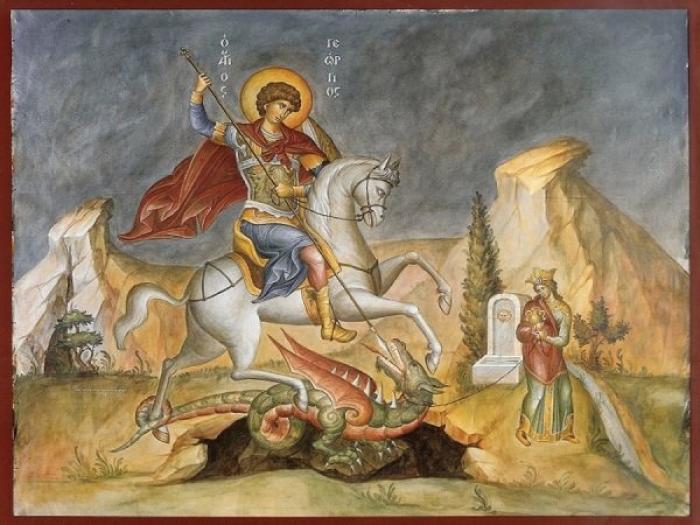
St. George slaying the dragon. The dragon represents evil, and its all-consuming nature. St. George slaying the dragon. The dragon represents evil, and its all-consuming nature.
There are also symbols in each icon that convey important meanings. For example, the halo, which represents being crowned with the sun, is a symbol of divinity. The Romans used this as a common convention in their artwork, and it was so well understood, it was copied by early Christian Roman artists. Today, we see halos, and few understand what they mean, or their origin. But people living in the ancient and medieval world understood their meaning. Of course, they represent divine holiness.
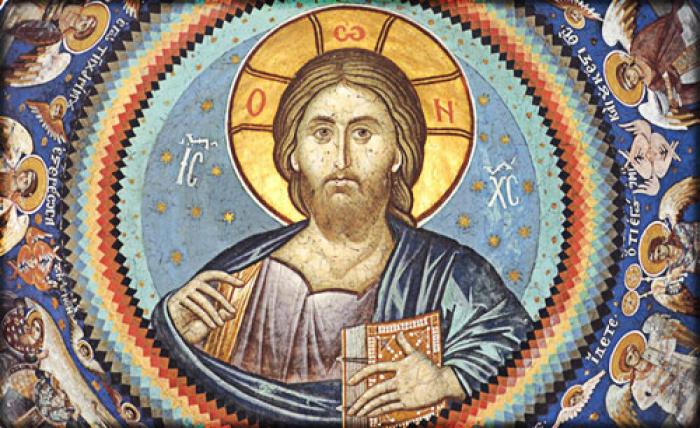
The halo is a sign of divinity. The Greek letters tell us who is depicted in the image. In this case, Jesus is present with a Bible, representing the Word of God made flesh.
Letters, often in Greek, also convey meaning. Another meme to look for are hand gestures. In this case, Jesus is holding His hand in such a way as to spell His name.
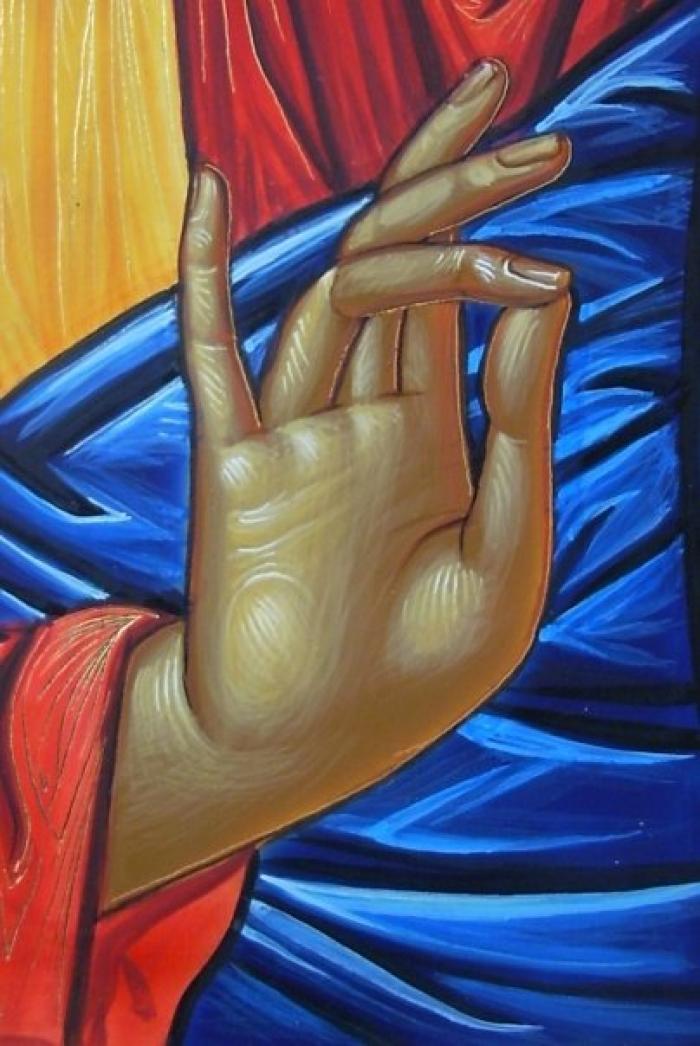
A hand signal which represents Jesus Christ. The fingers spell, I, C, X, and C. This is derived from the first and last letters of the Greek name for Jesus Christ (IHCOYC XPICTOC) and it represents the name by which we are saved.
Today, gangsters are known to flash hand signs at one another to show allegiance. But this is an ancient practice. Early Christians used secret gestures to identify themselves to one another, a response to public persecution. When the persecution ended, people remembered the signs and their meanings, and incorporated these gestures into icons.
There is no new thing under the Sun. (See: Ecclesiastes 1:9-10)
These practices can be seen in modern takes on icons. Recently, artists are taking medieval icons and drawing them in a modern fashion. They are updating these ancient memes for modern audiences. This modern icon of St. Joseph provides an example.
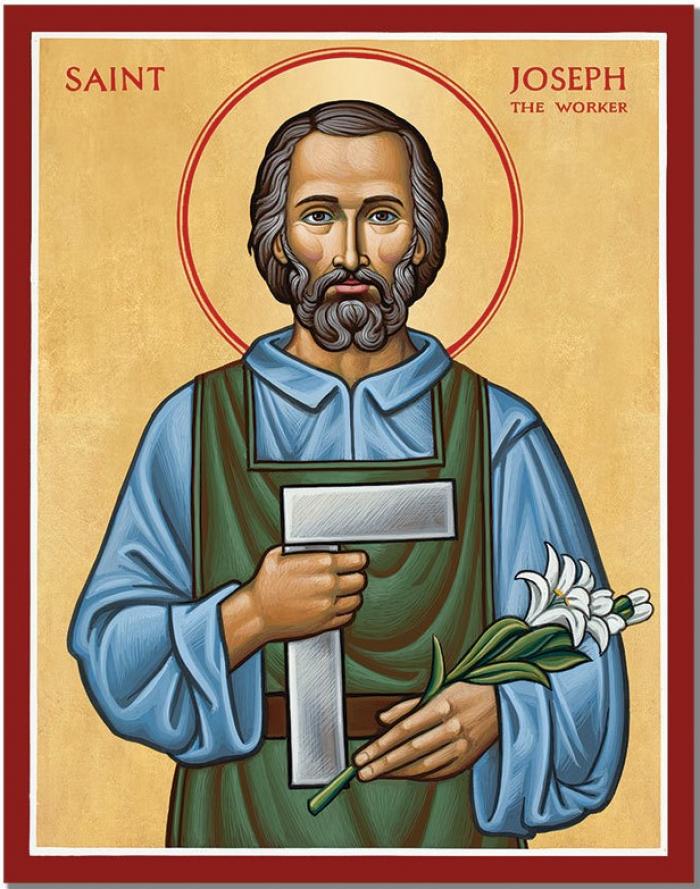
A modern depiction of St. Joseph with a modern square and lily makes it clear that St. Joseph is a worker. The earth-toned colors of his clothes depict him as an ordinary person, but the halo reveals his holiness.
He is clearly a working man, as the square and working clothes reveal. His clothing is that of a blue-collar worker. However, he is also holy, as the halo depicts, and the lily represents his integrity.
What should be obvious is that memes are nothing new. Ancient Catholics used memes to teach and convey meaning, exactly the same way modern users of the internet use them. Once you see this, you can't unsee it!
Join the Movement
When you sign up below, you don't just join an email list - you're joining an entire movement for Free world class Catholic education.
- Easter / Lent
- Ascension Day
- 7 Morning Prayers
- Mysteries of the Rosary
- Litany of the Bl. Virgin Mary
- Popular Saints
- Popular Prayers
- Female Saints
- Saint Feast Days by Month
- Stations of the Cross
- St. Francis of Assisi
- St. Michael the Archangel
- The Apostles' Creed
- Unfailing Prayer to St. Anthony
- Pray the Rosary
![]()
Copyright 2025 Catholic Online. All materials contained on this site, whether written, audible or visual are the exclusive property of Catholic Online and are protected under U.S. and International copyright laws, © Copyright 2025 Catholic Online. Any unauthorized use, without prior written consent of Catholic Online is strictly forbidden and prohibited.
Catholic Online is a Project of Your Catholic Voice Foundation, a Not-for-Profit Corporation. Your Catholic Voice Foundation has been granted a recognition of tax exemption under Section 501(c)(3) of the Internal Revenue Code. Federal Tax Identification Number: 81-0596847. Your gift is tax-deductible as allowed by law.









